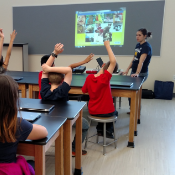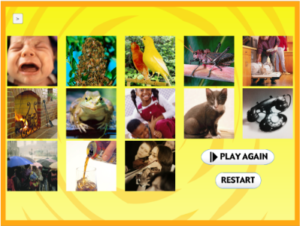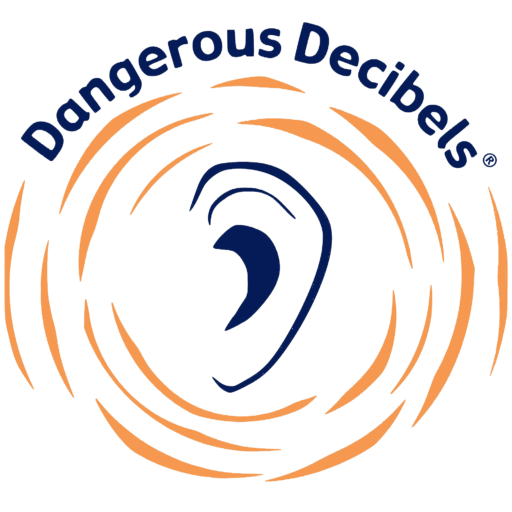
5What’s That Sound?

This activity is designed to convey the reality of listening with a high-frequency hearing loss due to hazardous noise. It demonstrates the consequences of unprotected exposure to loud sound.
The key to making this activity successful is to master the sequence of sound presentations with student interactions. The intent is to always present the “hearing loss” sound first and let the students try to identify the sound (clicking with the mouse cursor on each guess) until the correct sound is identified. Then playing the sound “without hearing loss” to emphasize the difference in the sound perception.
You can play the sounds more than once, especially in the beginning to help students hear the differences. The differences can be discussed very simply: softer vs. louder; clear vs. unclear, sharp vs. dull for instance. There is no need to spend a lot of time discussing the differences between normal and with hearing loss.
It is not necessary to play all of the sounds. With time, you will become more become more efficient at manipulating the computer software and managing the student interactions. This will allow you to present more sounds within the allotted time. (~7 minutes)

